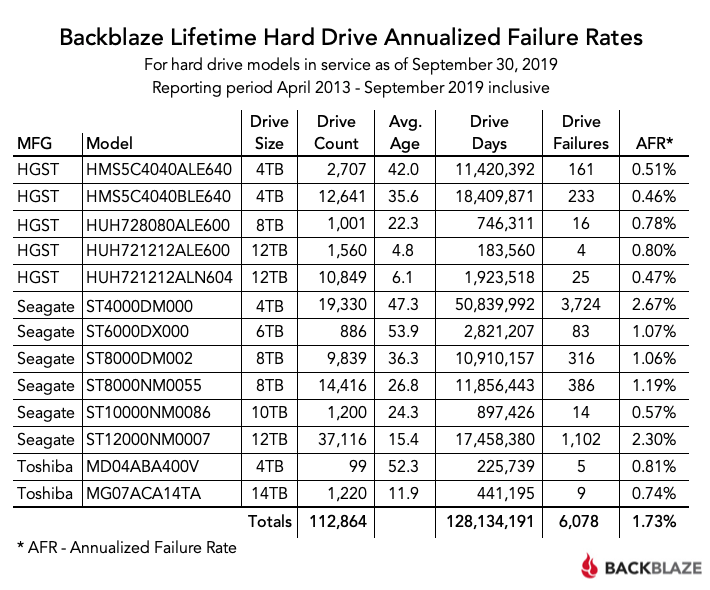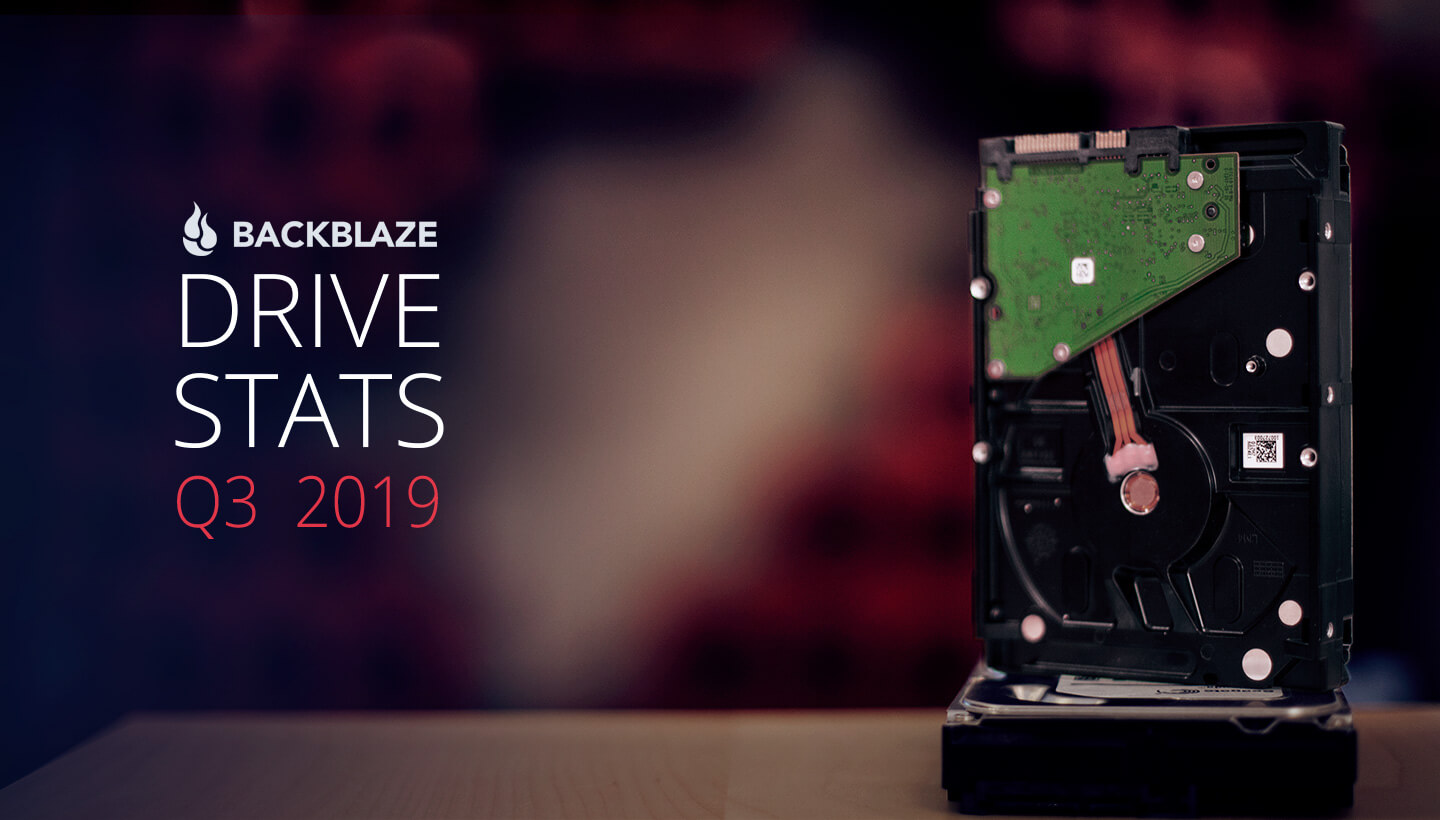In context: For its latest data on HDD reliability, Backblaze omitted its quarterly stats report and only released the annualized lifetime failure rates of its hard drives. According to the cloud storage provider that regularly puts out these figures, the data it uses for creating quarterly reports might have been indirectly affected by a utility that performs data integrity checks on its hard drives, due to an increase in the frequency of these tests to account for the growing number of larger-capacity drives being deployed in the company's data centers.
Backblaze added 4,403 hard drives to its lifetime HDD reliability chart and reported an increase in their annualized failure rate, which now stands at 1.73 percent as compared to 1.70 percent in its last quarter.
The latest data accounts for HDDs that were in service as of September 30, 2019, with Backblaze skipping a quarterly report this time. The reason behind it, says the company, was the increasing number of data integrity checks that could have potentially dragged future HDD failures into this quarter.
"In late June, we decided to increase the rate of the shard integrity checks across the data farm to cause the checks to run as often as possible on a given drive while still maintaining the drive's performance. We increased the frequency of the shard integrity checks to account for the growing number of larger-capacity drives that had been deployed recently."
Nevertheless, Backblaze says that for a given drive model, the number of drive failures over its lifetime should not increase and that it's possible that "the shard integrity checks did nothing to increase the number of drive failures that occurred in Q3."
Even though it found the quarterly failure rates to not "vary wildly from previous quarters," the company didn't feel comfortable publishing them at this time and only put out the following chart:

The latest figures see a drop in drive count of the Seagate 4TB (ST4000DM000) model as well as its AFR percentage. Though it still remains the highest at 2.67 percent, dropping by 0.05 from its previously reported AFR value of 2.72 percent.
Meanwhile, the HGST 12TB (HUH721212ALN604) model, which was the least failing drive as per the last report, saw a minor bump of 0.10 percent to its AFR, increasing it to 0.47 percent. Its 4TB (HMS5C4040BLE640) sibling is now the least failing drive by the narrowest of margins.
For the next quarterly stats, we can expect the Q4 chart as well. Backblaze says that it will now internally track two different groups of drives. One group will comprise of disks that "went through the wormhole," referring to models that were subjected to its accelerated shard integrity checks, while the second group will consist of drives put in service after these checks were reduced.
The company will "compare these two datasets to see if there was indeed any effect of the increased shard integrity checks on the Q3 hard drive failure rates."
